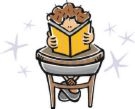
MOODY FOOD
By Ray Robertson
387 pages, ISBN 097767990X
From the back of the book – “ For Bill Hansen, things couldn’t be better. He’s got a beautiful folk-singer girlfriend, a job at Toronto’s coolest bookstore and, most of all, he’s got Yorkville, which in 1966 is nothing short of paradise for a boy from the suburbs. And then Bill meets the charismatic Thomas Graham, who draws Bill into an obsessive quest to create what he calls “interstellar North American Music” and the Duckhead Secret Society is born and launched on a whirlwind tour of bars, taverns and dives across America. But in the haze of harder and harder drugs, it all starts to come undone. As Bill recounts the rise and fall of Thomas Grahm and his musical vision, he simultaneously tells the story of frustrated idealism and the passing of an entire generation.”
This book was inspired by the singer Gram Parsons and while I am sure is not identical to his life there are enough important details to consider that if it is not a fact it certainly could have happened. I was born in 1962 so I watched this era of our history through the rose colored glasses of childhood. I could visualize each and every one of the characters as they would have been at the time. Not so much because of my memory but for the wonderful descriptions in the writing. The story was told by Bill but every so often you got a little snapshot into the child hood of Thomas. This was an important part of the writing style because you may never have understood Thomas otherwise without giving him his own voice in the book. Overall the writing was fun and interesting to read. I liked the fact that the author did not find it necessary to go deeply into descriptive love scenes or excessive use of foul language. Those additions would not have added in anyway to the story because that was not what the story was about. The only complaint that I had with the books writing was that occasionally I had trouble following who was saying what during a conversation. I had to re-read a few times but did not find it exceptionally distracting.
What I liked most about this book was the look at how charismatic individuals can sometimes enter and affect our lives. I have known many such individuals as Thomas through the years, some make it and some don’t. They often glow so brightly for a short time and then just kind of vanish. Thomas is no exception to this rule. The other characters try so hard to maintain their belief in what they are doing and in Thomas even when by doing so they are putting themselves at risk. This book is a perfect example of what addiction and co-dependency look like. At one point while I was reading I remembered how I felt when I was reading “The Outsiders” back in high school. I would find myself wanting to scream at the characters, “Stop! Don’t you see how stupid you are being”, but that was the whole point of the book. Sometimes we just don’t see that the road we are taking is not getting us where we wanted to go.
While I did like this book a lot it was not a book that I had to keep my head in until I was finished. I think that had more to do with the subject than it had to do with the writing. The one thing though that I think is important to also mention is that while the 60’s may seem like an era gone by it planted seeds in the young children that watched it from their playpens. I was to young to be influenced by the drugs during the 60’s but I was very much influenced by the message that it had to give and that is also what you will get from this book.











